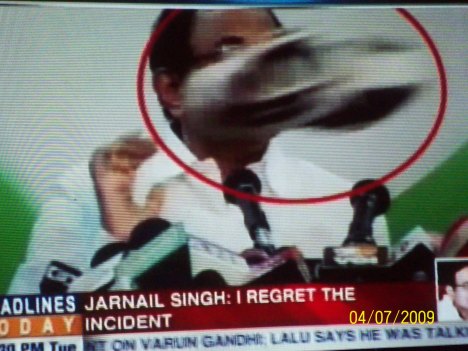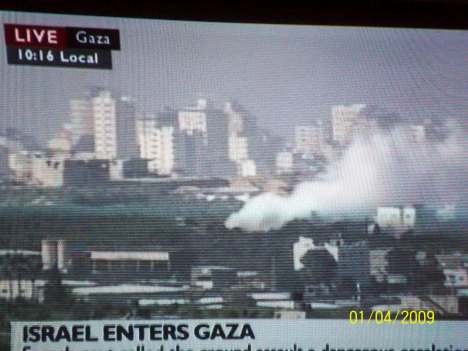 Infosys guy Nandan Nilekani found himself put ‘on the bench’ right on his first day in Parliament. It was his fault, in a way – Nilekani’s. He came to the House with a laptop without any reserve power. Besides a power socket he needed a screen and projector to make a presentation on his national plan to give every Indian a degital identity.
Infosys guy Nandan Nilekani found himself put ‘on the bench’ right on his first day in Parliament. It was his fault, in a way – Nilekani’s. He came to the House with a laptop without any reserve power. Besides a power socket he needed a screen and projector to make a presentation on his national plan to give every Indian a degital identity.
What folllowed is best described in Nilekani’s own words: “The next couple of minutes were a complete jolt for me. I was completely in a tizzy… A Joint Cabinet Secretary Committee was set up to judge the feasibility of my request. The Under Secretaries for the Ministries of Power, IT and Broadcasting will prepare a Viability Report after scrutinizing National Security threats to my request. This was because the power socket comes under Power, laptop comes under IT and projector comes under Broadcasting”.
I had this account on Nilekani’s ministerial avatar forwarded by a blogger friend. The honourable minister for our digital identity has been given a presentation slot three months from now. Which, presumably, should also give him time enough to acquire a wardrobe with kurtha by an Itallian designer. The Milan-based kurtha designer has been recommended to Mr Nilekani by fellow MP Mohd. Azharuddin. The new minister in the Manmohan cabinet was reminded, by a fellow minister rising on a point of order, that Mr Nilekani was not at Infosys and the corporate dress code he had followed there, flashy dark suit,’ did not go well with the image of a minister who should live to serve the common man and should be less ostentatious in his habits’.
The next time he shows up at Lok Sabha, Mr Nilekani better be in kutha. About his Day One in the House Nandanji reportedly text-messaged Murthy, “You won’t believe it but these guys work just like us. I am on a National Bench for the next three months!’
Filed under: Bangalore, Blogger, Bureaucracy, Business, Cricket, Information technology, Karnataka, Laptop, New Delhi, Politics | 2 Comments »



 Politicians rely on an obliging media to fly their political kites. This past week, the New Delhi sky over 10 Janpath was overcast with kites. When the numbers in the Lok Sabha poll made it clear that the coalition this time was going to be Congress-driven, Deva Gowda’s JD(S) swiftly switched fronts to offer ‘unconditional’ support to the Congress-led coalition, UPA.
Politicians rely on an obliging media to fly their political kites. This past week, the New Delhi sky over 10 Janpath was overcast with kites. When the numbers in the Lok Sabha poll made it clear that the coalition this time was going to be Congress-driven, Deva Gowda’s JD(S) swiftly switched fronts to offer ‘unconditional’ support to the Congress-led coalition, UPA.  Three days later came this headline, in the same newspaper. The Page One story read that Mr Kumaraswamy’s ‘herculean efforts to get into the cabinet now appears a distant dream’. And the question now was whether HDK would want to retain his Lok Sabha seat, at the expense of his seat in the Karnataka assembly.
Three days later came this headline, in the same newspaper. The Page One story read that Mr Kumaraswamy’s ‘herculean efforts to get into the cabinet now appears a distant dream’. And the question now was whether HDK would want to retain his Lok Sabha seat, at the expense of his seat in the Karnataka assembly. The shoe that newsman Jarnail Singh flung at home minister P Chidambaram at a New Delhi news conference was size-8, says
The shoe that newsman Jarnail Singh flung at home minister P Chidambaram at a New Delhi news conference was size-8, says 
 It appears as if shoe-throwing is okay, and media activism has just got very telegenic. Journalists of earlier generation, when we didn’t have live TV coverage, reckoned a media boycott or walk out on a minister at a press conference was a daring act.
It appears as if shoe-throwing is okay, and media activism has just got very telegenic. Journalists of earlier generation, when we didn’t have live TV coverage, reckoned a media boycott or walk out on a minister at a press conference was a daring act. Jarnail Singh and 24X7 news channels have given journalistic activism a dramatic dimension. I can visualise, in the days to come, a ‘jarnailist’ assigned to a press meet asking his colleagues, ‘what should I wear for the Bal Thakerey news conference?’.
Jarnail Singh and 24X7 news channels have given journalistic activism a dramatic dimension. I can visualise, in the days to come, a ‘jarnailist’ assigned to a press meet asking his colleagues, ‘what should I wear for the Bal Thakerey news conference?’. I don’t see Capt. Gopinath in Lok Sabha in 2009. Not because he isn’t a right candidate, but because he isn’t winnable as an Independent in the fray. Air Deccan Gopi appears to have an enlightened contempt for party candidature. “I don’t want to mortgage my ideas,” he says. Which makes a smart quote, but poor operating strategy. Ideas don’t get you anywhere in politics; cash, caste and community clout matter.
I don’t see Capt. Gopinath in Lok Sabha in 2009. Not because he isn’t a right candidate, but because he isn’t winnable as an Independent in the fray. Air Deccan Gopi appears to have an enlightened contempt for party candidature. “I don’t want to mortgage my ideas,” he says. Which makes a smart quote, but poor operating strategy. Ideas don’t get you anywhere in politics; cash, caste and community clout matter. Speaking of p2p contact, Gen.Musharraf could use his influence to mobilise young bloggers such as
Speaking of p2p contact, Gen.Musharraf could use his influence to mobilise young bloggers such as 
 TV doesn’t take us behind this picture of smoking Gaza. It takes a blogger to give us a sense of the misery and hardhip of ordinary Gazans, whose most normal condition of life today is its uncertainty. A US-based blogger Laila El-Haddad, who has, till now, managed to stay in touch with her parents in Gaza, shares her thoughts on the plight of Gazans, trapped in their homes and nowhere to go for safety.
TV doesn’t take us behind this picture of smoking Gaza. It takes a blogger to give us a sense of the misery and hardhip of ordinary Gazans, whose most normal condition of life today is its uncertainty. A US-based blogger Laila El-Haddad, who has, till now, managed to stay in touch with her parents in Gaza, shares her thoughts on the plight of Gazans, trapped in their homes and nowhere to go for safety. Excerpts from
Excerpts from 
